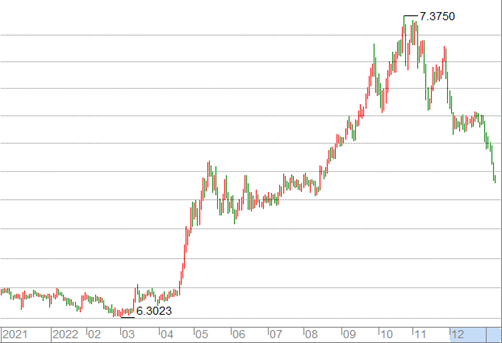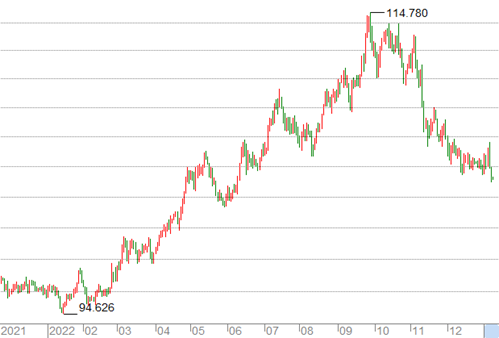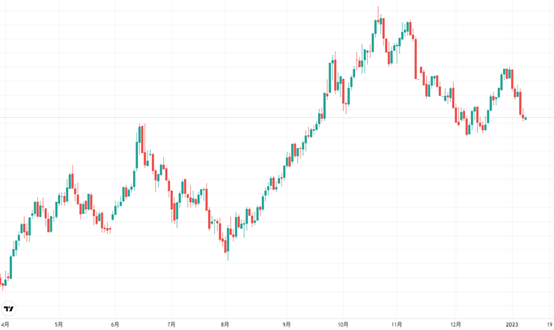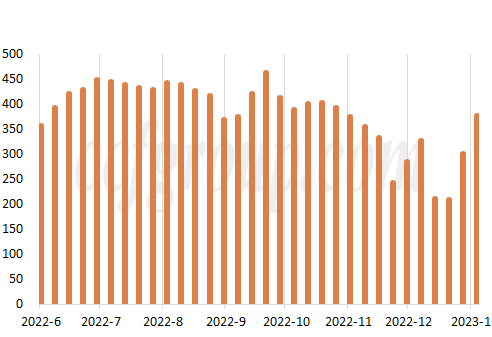Chinese Yuan continues appreciation against USD amid apparent expectation gap
The depreciation of the RMB has lasted for more than half a year, and the RMB exchange rate has risen significantly in recent months. On January 9, both the onshore and offshore RMB rose above 6.8 to a five-month high against the dollar.
Offshore RMB trend

The continuous rise of the RMB exchange rate was based on the decline of the US dollar index on the one hand and the expected rebound in China on the other hand.
As early as early November, the problem of the high peak of the dollar index was mentioned. The direction was no problem at present, and the trend is still continuing.
Judging from the latest data, the non-farm data were outwardly strong, but they revealed a lot of problems: for example, although the new growth was higher than expected, it was still the lowest level since December 2020, and almost all of the new jobs were part-time jobs; the unemployment rate has dropped unexpectedly, but leading indicators suggested it was likely to rise in a few months; wage growth has slowed to its lowest level since August 2021.
After the release of the non-farm data, the market expects the Fed to reduce the rate hike to 25 basis points at its next meeting (the probability of raising interest rates by 25 basis points is raised to 73 per cent from 54 per cent and the probability of raising interest rates by 50 basis points from 46% to 27%).
Other economic data clearly pointed to recession. Although PMI manufacturing data have fallen continuously, the service sector has remained strong, but recent data showed that US non-manufacturing PMI fell from 56.5 in November to 49.6 last month, marking the first time that service PMI has fallen below the 50 threshold since May 2020, indicating that the service sector, which accounts for more than 2/3 of US economic activity, has shrunk.
As a result, it can be seen that as recession signals increased, the dollar index continued to fall, approaching a more than half-year low, while US bond yields showed a downward trend.
US dollar index

Ten-year Treasury yield

Against the backdrop of a weaker dollar, gold has become a preferred investment in the market. It could be seen that since November, when the dollar peaked, gold began to strengthen at the same time. In recent months, many countries have added gold allocation one after another.
While fears of recession abroad continued to deepen, expectations in the domestic market have been rising since December. Under the news of the full unsealing of the epidemic in the first half of the December, the confidence of commodities in the stock market was boosted and the RMB strengthened rapidly against the US dollar. In the second half of the month, with the rapid rise in infection rates, the market began to trade sideways and even pull back, but after the peak, as the flow of people in public places and business circles resumed and the market mentality rose again, the RMB exchange rate rose rapidly again in January.
Average weekly subway passenger volume in ten cities
At the same time, from a policy point of view, senior officials also frequently declared their positions, including the vigorous liberalization of real estate regulation and control policies, the promotion of consumer policies, and so on.
Generally speaking, there has been a significant difference in internal and external expectations since December, which has promoted the continuous appreciation of the RMB. Market confidence has been rising, and Chinese-listed stocks have also performed well in overseas markets.
In medium-to-long-term run, the process of RMB appreciation will continue, but from the short-term trend or market rhythm, it is suggested to pay attention to whether the direction logic of the market within and outside China will continue in February and March.
- Top keywords
- Cotton Price
- Cotton Futures Price
- Cotton Futures
- CZCE
- PTA Futures Price
- Chemical Fiber
- Polyester Prices
- Wool price
- PTA Futures
- Shengze Silk
- China
- Yarn Price
- price
- China Textile City
- Fibre Price
- Benzene Price
- Cotton
- Index
- Cotton Index
- PTA
- fabric price
- NYMEX
- Top 10
- textile industry
- Spot Cotton
- Cotton Yarn
- Polyester Price
- Futures
- PTA Price
- cotton yarn price

